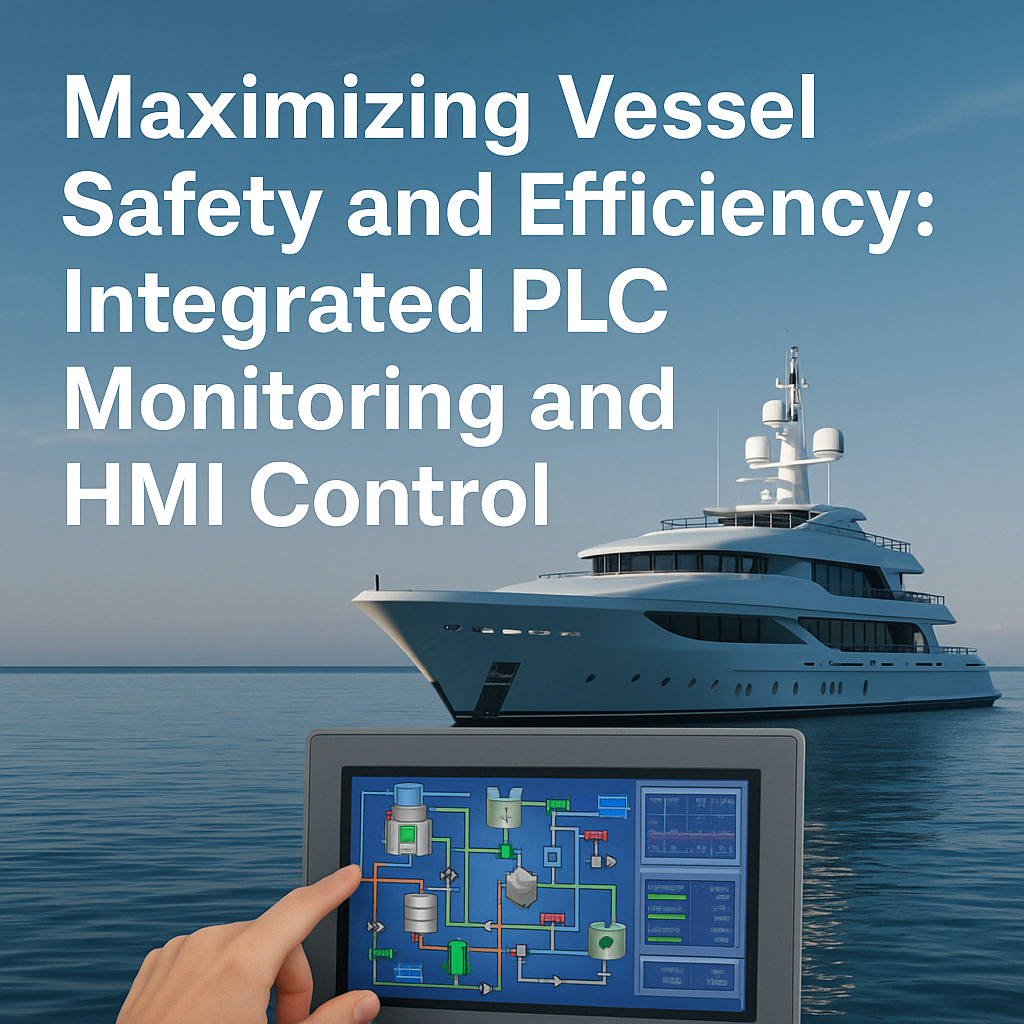Blog
Maximizing Vessel Safety and Efficiency: Integrated PLC Monitoring and HMI Control
Modern vessels are increasingly embracing automation to monitor critical systems and enhance operational efficiency. In today's world, where downtime is costly and safety is paramount, many shipowners are turning to programmable logic controllers (PLCs) paired with robust human-machine interfaces (HMIs) to achieve a fully integrated monitoring and control solution.
The Role of PLCs in Marine Automation
PLCs were originally designed for industrial environments—where reliability, ease of reprogramming, and robustness are essential. Today, these same qualities have driven their adoption in the maritime industry. In a boat, a PLC performs multiple functions:
Sensor Data Collection
Reads signals from numerous sensors installed throughout the vessel—from water detectors in the bilges to voltage and current sensors attached to the battery bank.
Processing & Decision Making
Using predefined logic (often programmed using ladder diagrams), the PLC processes incoming data and can react in real time to any out-of-limit conditions.
Control Actions
Executes commands like activating bilge pumps, switching power sources, or managing generator start/load profiles through integrated power management systems.
Key Parameters: From Bilges to Battery Levels
A fully integrated vessel monitoring system includes many aspects:
Bilge Monitoring
Bilge compartments are where water often accumulates. The PLC continuously monitors these compartments for abnormal water levels by interpreting sensor input. If an unwanted water ingress occurs, the system can quickly alert the crew and even activate bilge pumps.
Battery Management
Battery health is critical on modern vessels. The PLC gathers data from voltage sensors, coulomb counters, and temperature sensors to determine the state-of-charge (SoC) and overall battery health, ensuring safe operations and predicting when maintenance is needed.
Shore Power Consumption
When docked, vessels draw power from shore connections. Monitoring real-time power consumption is crucial to avoid overloads and ensure efficient usage of shore power.
Generator Control & PMS Integration
The generator is the vessel's lifeline when not connected to shore power. Modern systems use PLCs alongside a power management system (PMS) to ensure generators run at optimal load, minimizing fuel consumption and wear while preventing blackouts.
Centralized HMI: The Vessel's Command Center
All the data collected from the PLC's inputs—from bilge levels and battery status to shore power and generator performance—is presented on a central HMI screen. This user-friendly display plays a pivotal role in modern vessel automation:

Modern PLC-HMI integration schematic
Real-Time Visualization
The HMI offers animated mimic diagrams, charts, and alarms. Operators see an up-to-the-second overview of all critical systems, making it easy to spot anomalies.
User Interaction
Whether the situation demands manual intervention or adjustments to setpoints, the HMI serves as the direct control interface.
Remote Monitoring
Many modern HMIs are network-enabled. This means shipowners can monitor vessel performance remotely—ideal for oversight when docked or at sea.
Benefits and Future Directions
Enhanced Safety
Automatic alerts and rapid control actions mean that problems are identified and addressed before they escalate.
Efficiency & Cost Savings
Optimized energy use through real-time monitoring reduces fuel expenses and extends equipment lifespan.
Scalability
Modern PLC and HMI systems are modular, suitable for yachts or large commercial vessels.
Future Prospects
Integration with AI and machine learning will enable predictive maintenance and enhanced diagnostics.
Conclusion
By harnessing the power of robust PLCs paired with integrated HMIs, shipowners can monitor and control vital systems from one centralized interface. This approach enhances safety, streamlines operations, and provides the foundation for the smart vessels of tomorrow.
As marine automation continues to evolve, vessels equipped with these intelligent systems will lead the way in operational efficiency and crew safety—proving that smart technology is no longer optional, but essential for modern maritime operations.

